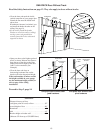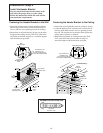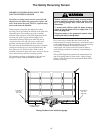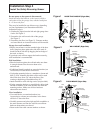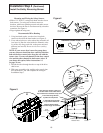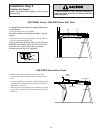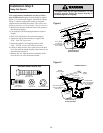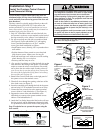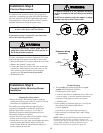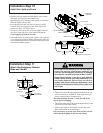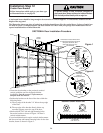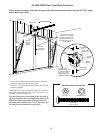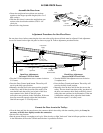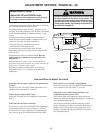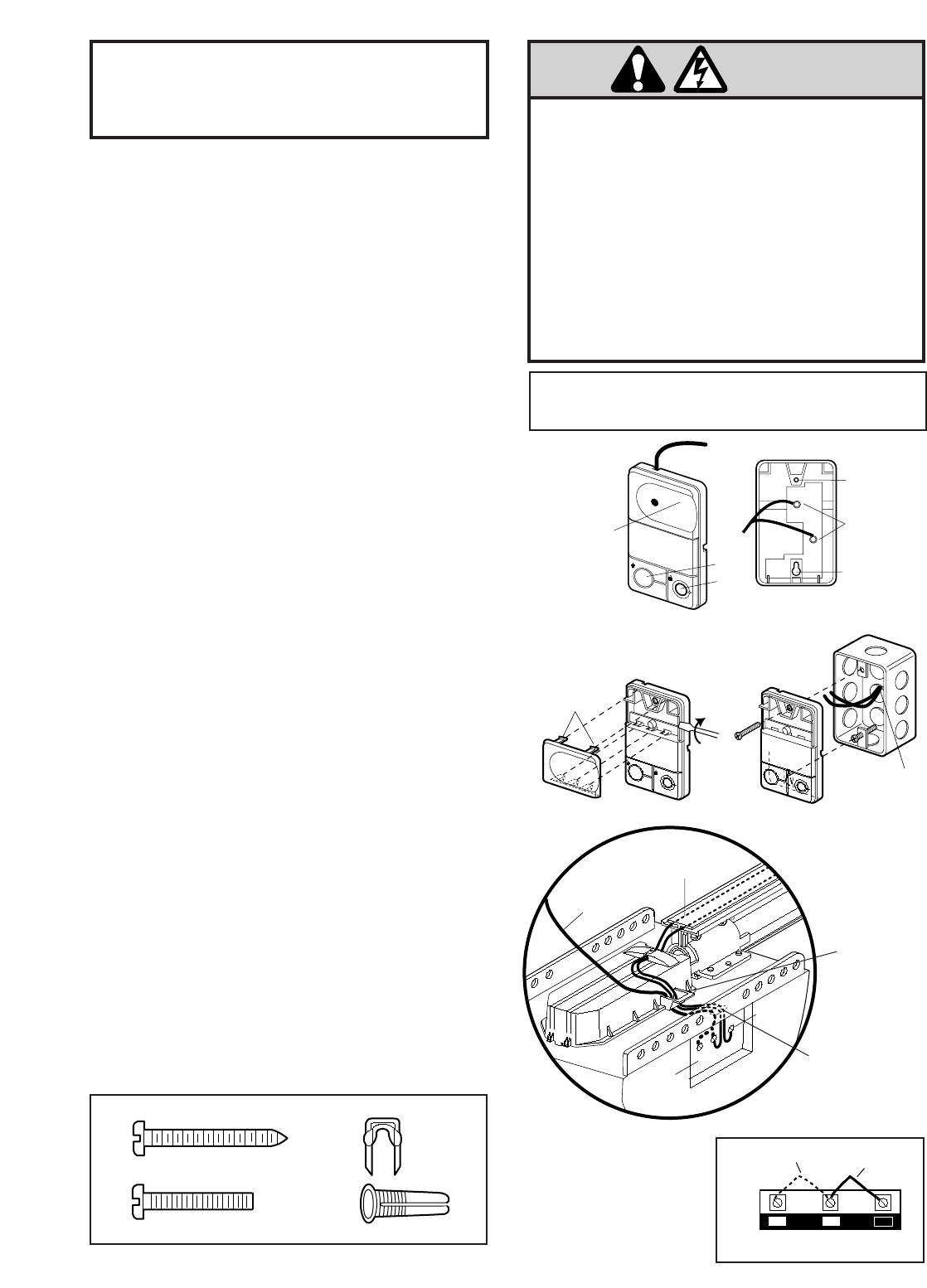
Lock
Light
Lighted
Push Button
LOCK
LIGHT
Terminal
Screws
Top
Mounting
Hole
Bottom
Mounting
Hole
PREMIUM
CONTROL
CONSOLE
BACK VIEW
WHITE
2
RED
1
Installation Step 7
Install the Premium Control Console
and Connect all Wiring
21
Do not connect to live electrical wiring. Connect only to 24 Volt
low voltage wires. Connection to live wires or higher voltage
may cause serious injury from shock, burn or electrocution.
Children operating or playing with a garage door opener can
injure themselves or others.
The garage door could close and
cause serious injury or death.
Install the door control (or any additional push buttons) out of
the reach of children and away from all moving parts of the
door and door hardware,
but where the garage door is visible.
Do not allow children to operate the push button(s) or the
remote control(s).
A moving garage door could injure someone under it.
Activate
the opener only when the door is properly adjusted, you can
see it clearly, and there are no obstructions to door travel.
Locate the door control within sight of the door at a
minimum height of 5 feet where small children cannot
reach, and away from all moving parts of the door and
door hardware.
The door control is typically attached directly to the wall.
If installing into drywall, drill 5/32" holes and use the
anchors provided. For pre-wired installations (as in new
home construction), Console models may be mounted to a
standard single gang box (Figure 2).
1. Strip 1/4" of insulation from one end of the bell wire
and connect it to the two screw terminals on the back of
the door control by color: white to 2 and white/red to 1.
2. Pry off cover along one side with a screwdriver blade
(see Figure1). Fasten with 6ABx1-1/4" self-tapping
screws (standard installation) or 6-32x1" machine
screws (pre-wired installation) as follows:
• Install bottom screw, allowing 1//8" to protrude above
wall surface.
• Position bottom of door control on screw head and
slide down to secure. Adjust screw for snug fit.
• Drill and install top screw with care to avoid cracking
plastic housing. Do not overtighten.
• Insert top tabs and snap on cover.
3. (For standard installation only) Run the bell wire up the
wall and across the ceiling to the opener. Use insulated
staples to secure the wire in several places. Be careful
not to pierce the wire with a staple, creating a short. If
your access door is near the garage door, you may run
this wire with the Safety Reversing Sensor wires along
the top of the rail. See page 18.
4. Remove the Control Center door on the right panel of
the opener to access the terminal screws.
5. Thread all wires through the opening at the base of the
drive shaft cover (see Figure 3).
6. Insert the remaining wire through the hole in the power
unit and strip 1/4" of insulation from each set of wires.
7. Connect the door control wire to the opener terminal
screws: white to 2 and white/red to 1. (See Figure 4.)
8. Separate the sensor white and white/black wires
sufficiently to connect to the opener terminal screws:
white to 2 and white/black to 3.
9. Attach the User Safety Instruction label to the wall near
the door control, and the Maintenance Instruction label
in a prominent location on the inside of the garage door.
Page 32 explains how to operate the opener using the
door control.
WARNINGWARNING
Do NOT connect the power and operate the opener at
this time. See Step 9 on page 22.
OPENER TERMINAL SCREWS
(In Control Center)
Sensor
Connections
Door Control
Connections
(dotted line)
1
2
3
To
Door
Control
To
Sensors
Terminal
Screws
Control
Center
Figure 4
Figure 3
WIRING TO
CONTROL CENTER
Insert wires
through
opening in
Drive Shaft Cover
Push wiring
through hole in chassis
(above Control Center)
and connect to opener
terminal screws
Dry Wall Anchors
Insulated
Staples
6AB x 1-1/4" Screw
Control Console (std installation)
6-32 x 1" Screw
Control Console (pre-wired)
Hardware Shown Actual Size
To Replace,
Insert
Top Tabs
First
To Remove,
Twist
Here
PRE-WIRED
INSTALLATION
REMOVE & REPLACE COVER
LOCK
LIGHT
Figure 1 Figure 2
24 Volt
2-Conductor
Bell Wire



